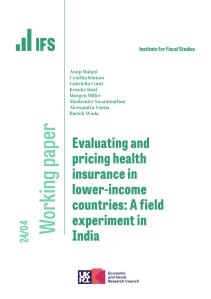We use claims panel data from a big German private health insurer to provide detailed individual-level evidence on medical spending between 2005 and 2011. This includes evidence on the distribution of medical spending, the dependence of medical spending on age and other demographic characteristics, its persistence, and how medical spending evolves in the years before death. Our main findings are that health care spending more than doubles between ages 50 and 80 and that spending is very concentrated: the top 10 per cent of all spenders are responsible for 53 per cent of all medical spending in a given year. There is a 50 per cent probability that individual expenditures lie in the same quintile of the distribution after five years, for both very-high- and very-low-cost individuals. Medical spending in the year of death is six times higher for the deceased than for everybody else in that year and accounts for 7.9 per cent of lifetime spending. Females use more office-based care and have higher spending at younger ages, whereas males have higher spending at older ages, particularly for hospital care, and die younger. The presentation of these empirical facts is framed by an institutional discussion of the German health care system, a comparison between publicly- and privately-insured individuals, and a discussion of medical spending trends in aggregate-level data.








